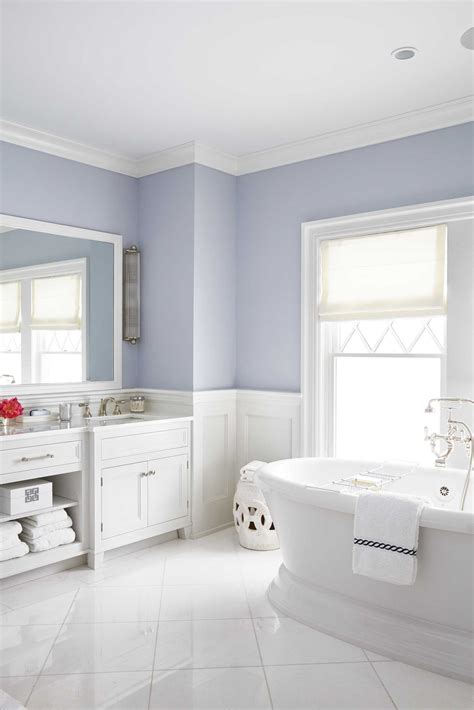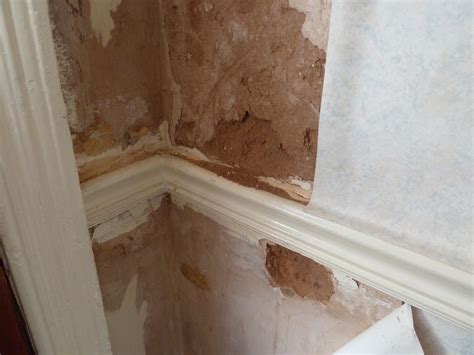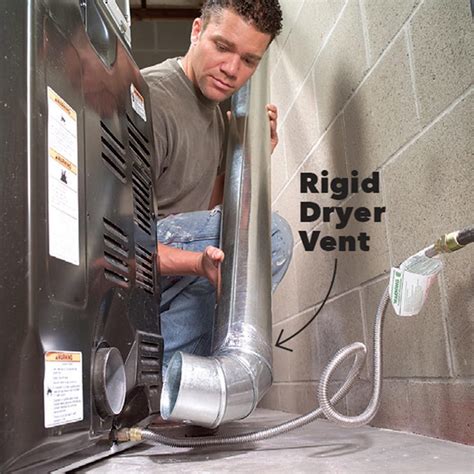Imagine transforming your bathroom into a vibrant sanctuary, a space that reflects your unique personality and provides a refreshing escape from the mundane. A simple yet effective way to achieve this is by breathing new life into your bathroom with a fresh coat of paint.
Painting your bathroom can completely rejuvenate it, making it feel like a whole new space without breaking the bank. From selecting the perfect colors to mastering the art of proper preparation, this article will guide you through all the essential steps and inspire you with creative ideas to successfully embark on your painting adventure.
Choosing the right color palette is a crucial first step in transforming your bathroom. It sets the tone and creates the ambiance you desire. Whether you prefer a calming retreat with cool tones or a bold and energetic space with vibrant hues, the possibilities are endless. By carefully selecting colors that complement your existing fixtures and overall theme, you can create a cohesive and visually appealing look.
Preparation is key when it comes to achieving a flawless finish. Properly preparing your bathroom walls and surfaces will ensure that the paint adheres well and lasts for years to come. From cleaning and repairing any existing damage to sanding and priming, investing time in this initial stage will pay off with a smooth and long-lasting result.
Choosing the Perfect Paint Color for Your Bathroom

When it comes to transforming your bathroom, one key element that can make a huge difference is the paint color you choose. The right shade can create a serene and relaxing space, while the wrong one can leave you feeling less than inspired. In this section, we will explore the importance of selecting the perfect paint color for your bathroom and provide you with useful tips and guidance to help you make the best choice.
Consider the Size and Lighting:
Before diving into a sea of paint swatches, it's crucial to take into account the size and lighting of your bathroom. If you have a small bathroom with limited natural light, opting for lighter shades can help create an illusion of spaciousness. On the other hand, if you have a larger bathroom flooded with natural light, you can experiment with bolder and darker hues to add depth and drama to the space.
Understand the Psychology of Color:
Colors have the power to evoke emotions and set the mood in any room, including your bathroom. Understanding the psychology of color can guide you in selecting a paint color that aligns with the atmosphere you desire. For instance, if you seek tranquility and relaxation, blues and greens are known to have calming effects. Alternatively, if you want to energize your morning routine, yellows and oranges can boost your mood and create a vibrant ambiance.
Take Inspiration from Your Bathroom's Elements:
Your bathroom already has existing elements such as tiles, fixtures, and accessories. These elements can serve as a source of inspiration when choosing a paint color. Look for undertones or complementary shades in these features, and use them to guide your color selection. By harmonizing the paint color with the bathroom's existing elements, you can create a cohesive and visually appealing space.
Test Before Painting:
Once you have narrowed down your options, it's essential to test the paint colors in your bathroom before committing to one. Lighting conditions can affect how a color appears, so applying small swatches to different areas of the walls will allow you to see how they look throughout the day. Additionally, observing how the colors complement your bathroom's fixtures and decor will help finalize your decision.
Consider the Overall Aesthetic:
Lastly, when selecting a paint color for your bathroom, consider the overall aesthetic and style you want to achieve. Whether you prefer a modern, minimalist look or a cozy, vintage vibe, the paint color you choose should align with your desired aesthetic. Remember that colors can play a significant role in creating a cohesive and visually pleasing ambiance that reflects your personal taste and style.
In conclusion, choosing the right paint color for your bathroom is an exciting task that requires careful consideration. By considering the size and lighting, understanding the psychology of color, taking inspiration from existing elements, testing before painting, and considering the overall aesthetic, you can ensure that your bathroom's new paint color enhances its beauty and creates the desired atmosphere.
Consider the Finish and Texture of the Paint
Contemplating the final look and feel of your newly painted bathroom? Look no further than the finish and texture of the paint. Selecting the right finish and texture can greatly impact the overall aesthetic and durability of your bathroom walls.
The finish of the paint refers to the sheen or glossiness of the surface after it dries. It plays a vital role in determining the appearance and ease of maintenance of your bathroom walls. Depending on your preference, you can choose from a variety of finishes such as matte, eggshell, satin, semi-gloss, and high-gloss. Each finish offers its own unique characteristics, from a sleek and modern look to a subtle and muted elegance.
Additionally, the texture of the paint can make a significant difference in the overall visual appeal of your bathroom. Textured paints are designed to add depth and dimension to your walls, creating a more interesting and dynamic look. Common texture options include smooth, textured, popcorn, and faux finishes. Consider the existing decor of your bathroom and choose a texture that complements the style and theme.
| Finish | Description |
|---|---|
| Matte | Offers a flat, non-reflective finish and is ideal for hiding surface imperfections. |
| Eggshell | Provides a subtle sheen and is easier to clean compared to matte finishes. |
| Satin | Offers a soft, velvety finish and is resistant to mildew and moisture. Perfect for bathrooms with high humidity. |
| Semi-gloss | Provides a lustrous finish and is highly durable. It is easy to clean and resistant to water and stains. |
| High-gloss | Reflects the most light, creating a highly shiny and luxurious finish. It is extremely durable and ideal for bathrooms with heavy traffic. |
When it comes to selecting the finish and texture of the paint for your bathroom, consider both style and functionality. Take into account factors such as durability, ease of cleaning, and the overall atmosphere you want to create. With the right finish and texture, you can transform your bathroom into a truly remarkable space.
Preparing Your Bathroom Walls for a Fresh Coat of Paint

To achieve a flawless and long-lasting paint finish in your bathroom, it's crucial to properly prepare the walls. Proper preparation ensures that the paint adheres well and creates an environment that is resistant to moisture and everyday wear and tear. In this section, we'll guide you through the necessary steps to prepare your bathroom walls for a successful painting project.
Clean and Repair
Before you begin painting, it's important to clean the walls thoroughly to remove any dirt, grease, or stains. Using a mild detergent mixed with warm water and a sponge or cloth, gently scrub the walls to ensure they are free from any contaminants that may affect the paint's adhesion. If there are any holes, cracks, or other imperfections in the walls, fill them with a suitable filler and allow it to dry completely. Sand down any rough patches or uneven areas to achieve a smooth surface.
Protect Surfaces
Before you start prepping your walls, take the time to protect any surfaces that won't be painted. Cover countertops, fixtures, and flooring with plastic sheeting or drop cloths to prevent accidental splatters and drips. Use painter's tape to mask off areas such as trim, windows, and outlets, ensuring clean lines and preventing paint from going where it's not intended.
Prime the Walls
Priming your bathroom walls is a crucial step in creating a durable paint finish. A good quality primer creates a smooth surface for the paint to adhere to, helps seal the walls, and enhances the paint's coverage and longevity. Apply the primer evenly using a brush or roller, ensuring that it covers the entire surface. Allow the primer to dry completely according to the manufacturer's instructions before moving on to the next step.
Choose the Right Paint
When selecting paint for your bathroom walls, it's important to choose a product specifically designed for high-humidity environments. Look for paints that have moisture-resistant properties and are mold and mildew resistant. These types of paints will help protect your walls from damage caused by moisture and ensure a long-lasting finish.
Conclusion
By properly preparing your bathroom walls before painting, you'll set the foundation for a successful and visually appealing project. Cleaning, repairing, protecting surfaces, priming, and choosing the right paint are all crucial steps to ensure your bathroom walls stand up to the test of time and remain beautiful for years to come.
Preparing Your Bathroom: Removing Existing Wallpaper or Paint
In order to transform your bathroom with a fresh new look, it is crucial to start by removing any existing wallpaper or paint. This important step will create a clean canvas for your upcoming painting project. By eliminating the remnants of previous finishes, you can ensure a smooth and flawless outcome.
Begin the process by carefully inspecting the walls for any imperfections or loose areas. Once identified, use a scraper or putty knife to gently peel off the wallpaper or lift away the old paint. Take caution not to damage the underlying surface, as it will serve as the foundation for your newly painted bathroom.
Depending on the type of paint or wallpaper used previously, the removal process may require different techniques. For instance, if the walls were previously painted with oil-based paint, you may need to apply a chemical paint stripper to effectively loosen and remove the stubborn layers.
While removing wallpaper, you can try using a mixture of warm water and liquid detergent to soak the paper and make it easier to peel off. Alternatively, store-bought wallpaper removal solutions can also be effective in dissolving the adhesive and facilitating removal.
Once the wallpaper or paint has been successfully removed, it is important to thoroughly clean the walls to remove any residue or traces left behind. Use a mild cleanser and warm water to wash away any remaining dirt or adhesive. Allow the walls to dry completely before proceeding to the next step of your bathroom painting project.
By taking the time to remove any existing wallpaper or paint and properly preparing the walls, you are setting the stage for a successful bathroom painting endeavor. This meticulous process ensures a clean surface and enhances the longevity of your new paintwork. Remember to approach each step with care and attention to detail, and soon you will be ready to bring your dream bathroom to life with a fresh coat of paint.
Repairing any Damaged Walls or Surfaces

In order to ensure a successful and beautiful bathroom painting project, it is essential to address any damaged walls or surfaces before you begin. Paying attention to the condition of your bathroom walls and surfaces not only improves the final aesthetic result, but also helps to maintain the structural integrity of your bathroom in the long run.
Start by thoroughly inspecting your bathroom walls and surfaces for any cracks, holes, or other types of damage. These issues can be caused by various factors such as water leaks, moisture buildup, or general wear and tear. Identifying and repairing these damages is crucial to prevent further degradation and ensure a smooth painting process.
If you come across any cracks, use a scraper or putty knife to remove any loose or damaged material. Once the area is clean, apply a suitable patching compound or filler to fill in the cracks or holes. Smooth out the surface with a putty knife, ensuring it is level and flush with the surrounding area. Allow the compound to dry completely before moving forward.
In the case of larger or more extensive damages, such as significant water damage or structural issues, it is advisable to consult a professional contractor or plumber to assess and repair the problem. This is especially important to ensure the underlying cause of the damage is addressed properly.
After the repairs have been made, it is essential to properly prep the repaired walls or surfaces before painting. This usually involves sanding the patched area to create a smooth and even surface, as well as applying a primer to promote better adhesion of the paint. Following these steps will ensure that the repaired walls or surfaces are ready for a fresh coat of paint.
By taking the time to repair any damaged walls or surfaces before painting your bathroom, you are not only enhancing its visual appeal but also preventing potential future issues. This step is crucial for achieving a professional and long-lasting result, ensuring that your newly painted bathroom will be a space you can enjoy for years to come.
Prepare the Walls for a Perfect Paint Job: Primer is Key
Before bringing your colorful vision to life, it is essential to properly prime the walls. The purpose of priming is to create a smooth and even surface for the paint to adhere to. Priming not only improves the appearance of the final result, but it also enhances the durability and longevity of the paint.
When selecting a primer, consider the type of surface you will be working with. Whether it is a previously painted wall, new drywall, or a surface with stains or discoloration, there is a primer specifically designed to address each condition.
One common type of primer is a stain-blocking primer, which helps to seal and cover up any existing stains or marks on the walls. This is particularly useful when dealing with water stains, smoke stains, or crayon marks. On the other hand, if you are working with new drywall or other porous surfaces, a high-quality sealing primer will help to prevent the paint from being absorbed too quickly, ensuring a more even finish.
Before starting the priming process, be sure to clean the walls thoroughly to remove any dirt, grease, or dust that may prevent the primer from adhering properly. Patch any holes or cracks in the walls, and sand down any rough areas to ensure a smooth surface.
When applying the primer, use a brush or roller depending on the size and texture of the walls. Start from the top and work your way down, using long, even strokes. A thin coat of primer is usually sufficient, but if you are working with a highly porous surface or if the existing color is very dark, a second coat may be necessary. Allow the primer to dry completely before applying the paint.
- Choose the right primer for your specific wall conditions
- Clean the walls thoroughly before priming
- Repair any imperfections on the surface
- Apply the primer evenly using a brush or roller
- Consider a second coat for highly porous surfaces or dark colors
- Allow the primer to dry completely before painting
Select Appropriate Tools and Equipment

When it comes to bringing your bathroom painting dream to life, selecting the right tools and equipment is crucial for a successful project. The choice of tools and equipment depends on the size of the area you plan to paint and the desired end result. By choosing the appropriate tools and equipment, you can ensure a smooth and professional-looking paint job.
- Brushes: Quality brushes are essential for achieving clean and precise lines. Consider using a combination of paintbrushes with different bristle types and sizes to accommodate various surfaces and details.
- Rollers: Rollers are great for covering large areas quickly and evenly. Opt for rollers with the appropriate nap length, depending on the texture of your bathroom walls. Shorter naps work well for smooth surfaces, while longer naps are suited for textured walls.
- Dropsheets or Tarps: Protecting your bathroom fixtures and flooring is essential during the painting process. Use dropsheets or tarps to cover and secure the area, ensuring no drips or spills damage the surrounding surfaces.
- Sandpaper: Before starting the painting process, it's important to prepare the surfaces by sanding them. Sandpaper helps smooth out any imperfections and creates a clean canvas for the paint to adhere to.
- Tape: Achieving clean and straight lines can be easily achieved by using painter's tape. Apply it to areas that you want to protect from paint or to create sharp edges between different colors or finishes.
- Primer: Applying a primer before painting is recommended, especially if you're painting over a dark or glossy surface. Primer helps the paint adhere better and improves the overall durability and coverage of the final paint job.
- Paint Trays and Liners: Pouring paint into a tray allows for easy access and dipping of brushes or rollers. Consider using disposable liners for the trays, as they make cleanup a breeze.
- Extension Poles: If you have high ceilings or hard-to-reach areas, extension poles can be attached to rollers or brushes to provide additional reach. This minimizes the need for ladders and ensures safety during the painting process.
- Paint Scrapers: Removing old paint or wallpaper can be a necessary step before painting. Paint scrapers help in efficiently removing unwanted layers, ensuring a smooth surface for the new paint.
- Protective Gear: Don't forget to equip yourself with the necessary protective gear, such as gloves, goggles, and masks. These will help protect you from any fumes, chemicals, or accidental splatters during the painting process.
By taking the time to select the appropriate tools and equipment, you can set yourself up for a successful bathroom painting project. Remember to consider the specific needs of your space, surfaces, and desired outcome to ensure a professional and satisfying result.
Follow Proper Painting Techniques
In order to achieve professional and long-lasting results when repainting your bathroom, it is crucial to adhere to proper painting techniques. By employing correct methods and utilizing the right tools, you can transform your bathroom into a stunning space that reflects your personal style. This section will guide you through the essential steps and tips to ensure a successful painting project.
| 1. Surface Preparation |
| Before starting the painting process, it is essential to prepare the bathroom surfaces properly. This includes cleaning the walls, removing any dirt, dust, or grease, and filling any holes or cracks with appropriate filler. By ensuring a clean and smooth surface, the paint will adhere better and result in a more professional finish. |
| 2. Choosing the Right Paint |
| Selecting the appropriate type of paint is crucial for achieving a durable and moisture-resistant finish in a bathroom. Consider using a high-quality paint specifically designed for bathrooms and humid environments. Opt for paints with mildew and moisture resistance properties to prevent any potential damage caused by constant exposure to water and humidity. |
| 3. Primer Application |
| Using a primer is essential, especially when painting over previously painted surfaces or dealing with stains. The primer creates a smooth and even base for the paint to adhere to, resulting in a more uniform and long-lasting finish. Make sure to choose a primer that is suitable for the type of paint you are using and follow the instructions regarding application and drying time. |
| 4. Proper Techniques for Painting |
| When it comes to applying the paint, using the appropriate techniques is key. Start by cutting in the edges with a brush, ensuring neat lines and corners. Then, use a roller for larger surfaces to achieve a smooth and even coat. It is essential to apply multiple thin coats rather than one heavy coat to avoid drips, streaks, and uneven results. Allow each coat to dry completely before applying the next. |
| 5. Finishing Touches |
| After the paint has dried, it is time for the finishing touches. Remove any painter's tape carefully, ensuring the paint is fully dry to prevent smudging. Inspect the walls for any imperfections or missed spots and touch up as needed. Finally, clean up your painting tools and dispose of any waste materials properly. |
By following these proper painting techniques, you can successfully transform your bathroom and achieve a professional-looking finish that will last for years to come.
Ensure Proper Ventilation and Drying Time

Adequate ventilation and proper drying time are crucial factors to consider when undertaking a bathroom painting project. Ensuring good airflow and allowing sufficient time for the paint to dry will contribute to a successful and long-lasting result.
Ventilation is important for several reasons. Firstly, it aids in the removal of odors and fumes associated with paint. These odors can be unpleasant and potentially harmful, so ensuring proper ventilation will help to maintain a healthy environment during and after the painting process. Secondly, ventilation helps to reduce moisture levels in the bathroom, preventing the growth of mold and mildew. Moisture can build up in bathrooms due to the high humidity levels, and without adequate ventilation, this can lead to a host of issues. Lastly, good airflow helps the paint to dry faster and more evenly, resulting in a smooth and professional finish.
When it comes to drying time, patience is key. Rushing the process can lead to a variety of problems, such as uneven drying, smudging, and scuffing. It's important to follow the manufacturer's instructions regarding the recommended drying time for the specific type of paint being used. Factors such as temperature and humidity levels can also affect drying time, so it's crucial to take these into consideration. It's advisable to allow ample time for the paint to dry before using the bathroom or exposing it to moisture, as this can negatively impact the appearance and durability of the painted surfaces.
One way to facilitate proper ventilation and drying is to open any windows in the bathroom to allow fresh air to circulate. Additionally, consider using a fan or extractor to help expel fumes and excess moisture. It's also beneficial to avoid painting during periods of high humidity or when the bathroom is likely to be heavily used, as this can impede the drying process.
| Benefits of Proper Ventilation and Drying Time | Tips for Ensuring Proper Ventilation and Drying Time |
|---|---|
| - Removes odors and fumes | - Open windows or use a fan to circulate air |
| - Prevents mold and mildew growth | - Avoid painting during high humidity or heavy bathroom use |
| - Helps paint dry faster and evenly | - Follow manufacturer's instructions for drying time |
FAQ
What are the benefits of painting a bathroom?
Painting a bathroom has several benefits. It can instantly refresh the space and give it a new look. Additionally, painting the walls can help protect them from moisture and mold, increasing their durability. Painting can also be a cost-effective way to update the bathroom without a complete renovation.
What type of paint should I use for a bathroom?
For a bathroom, it is important to choose a paint that is moisture-resistant and mold-resistant. Look for a paint specifically labeled as suitable for bathrooms or high-moisture areas. These paints usually have additives that make them more resistant to peeling, cracking, or mildew growth.
Do I need to prepare the bathroom before painting?
Yes, proper preparation is key to achieving a smooth and long-lasting paint finish. Before painting, it is important to clean the walls thoroughly, remove any existing peeling or flaking paint, fill in any holes or cracks, and sand the surface for better adhesion. It is also recommended to use painter's tape to protect fixtures and trim.
Can I paint over tiles in the bathroom?
While it is technically possible to paint over tiles in the bathroom, it is not always the most ideal solution. Tiles have a smooth and non-porous surface, which makes it challenging for paint to adhere properly. Additionally, the constant moisture and humidity in the bathroom can cause the paint to peel or bubble over time. It is generally recommended to consider other options such as tile refinishing or replacing the tiles altogether.
What are some popular color options for bathroom painting?
When it comes to bathroom painting, the choice of color largely depends on personal preference and the desired atmosphere. However, popular color options for bathrooms include light shades such as soft blues, soothing greens, pale grays, or neutral tones. These colors can create a calm and relaxing environment. It is also important to consider the existing fixtures and decor in the bathroom to ensure a harmonious color scheme.



